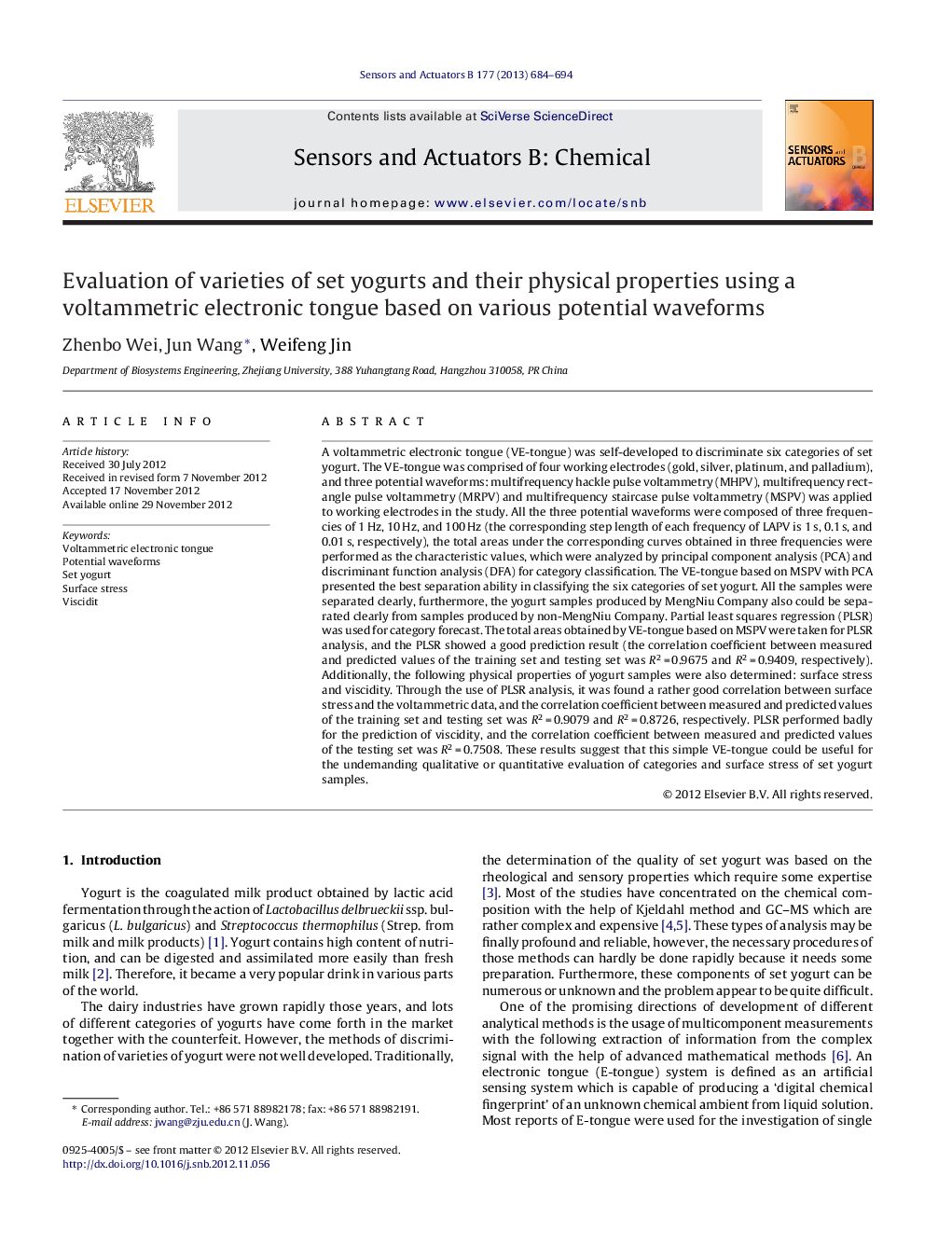| Article ID | Journal | Published Year | Pages | File Type |
|---|---|---|---|---|
| 742398 | Sensors and Actuators B: Chemical | 2013 | 11 Pages |
A voltammetric electronic tongue (VE-tongue) was self-developed to discriminate six categories of set yogurt. The VE-tongue was comprised of four working electrodes (gold, silver, platinum, and palladium), and three potential waveforms: multifrequency hackle pulse voltammetry (MHPV), multifrequency rectangle pulse voltammetry (MRPV) and multifrequency staircase pulse voltammetry (MSPV) was applied to working electrodes in the study. All the three potential waveforms were composed of three frequencies of 1 Hz, 10 Hz, and 100 Hz (the corresponding step length of each frequency of LAPV is 1 s, 0.1 s, and 0.01 s, respectively), the total areas under the corresponding curves obtained in three frequencies were performed as the characteristic values, which were analyzed by principal component analysis (PCA) and discriminant function analysis (DFA) for category classification. The VE-tongue based on MSPV with PCA presented the best separation ability in classifying the six categories of set yogurt. All the samples were separated clearly, furthermore, the yogurt samples produced by MengNiu Company also could be separated clearly from samples produced by non-MengNiu Company. Partial least squares regression (PLSR) was used for category forecast. The total areas obtained by VE-tongue based on MSPV were taken for PLSR analysis, and the PLSR showed a good prediction result (the correlation coefficient between measured and predicted values of the training set and testing set was R2 = 0.9675 and R2 = 0.9409, respectively). Additionally, the following physical properties of yogurt samples were also determined: surface stress and viscidity. Through the use of PLSR analysis, it was found a rather good correlation between surface stress and the voltammetric data, and the correlation coefficient between measured and predicted values of the training set and testing set was R2 = 0.9079 and R2 = 0.8726, respectively. PLSR performed badly for the prediction of viscidity, and the correlation coefficient between measured and predicted values of the testing set was R2 = 0.7508. These results suggest that this simple VE-tongue could be useful for the undemanding qualitative or quantitative evaluation of categories and surface stress of set yogurt samples.
